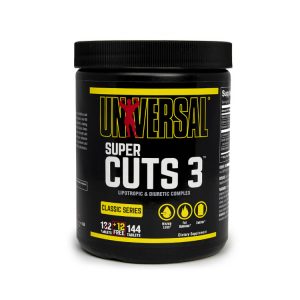To Lift Heavy Or Not?
With Cedric McMillan being recently crowned the new champ at the Arnold Classic, I couldn’t help but be amazed by his physique, especially since he will be turning 40 this year. I sat glued to my iPad watching the live feed of the Arnold and listening to the commentators. They spoke briefly about his training, mentioning that Cedric still had more life in his bodybuilding career than other bodybuilders his age. They said the “typical” bodybuilder usually trains in the traditional way of heavy weights and low reps, while Cedric preferred to train at lower weight and higher reps.
Let’s take a look at the legendary Ronnie Coleman, known for being one of the greats and also well known for being able to move a large amount of weight. Ronnie has an impressive record of winning the Mr. Olympia title 8 times with 26 IFBB wins. We have all seen Ronnie’s traditional workouts on YouTube and his impressive, larger than life pictures. What did his legacy cost him?
Ronnie suffered his first serious injury in 1996 when he herniated a disc in his lower back while barbell squatting 600 pounds. Since then his list of surgeries include:
• December 2007, laminectomy of L4-L5 discs
• July 2011, disc decompression of L3-L4 discs
• December 2011, fusion of neck C4-C5-C6
• July 2014, left hip replacement requiring 2 screws
• August 2014, right hip replacement requiring 4 screws
• July 2015, fusion of L3-L4 discs
When Ronnie was asked whether or not these injuries were worth it and would he do anything differently, Ronnie replied: “It was worth it without a doubt but yes, I would have done it differently if I could go back. I would have trained HARDER!”
Now let’s fast forward to the present and take a look at Cedric and his training method. Looking at several training sessions, most of his reps were 8 more than Ronnie’s.
One of Cedric’s leg workout looked like this
• Leg Extensions 12-20 reps to failure
• Leg Press 12-20 reps to failure
• Walking Lunges 40 steps (no additional weight)
• Leg Extensions 1 set x 20 reps
• Seated Leg Curls, Stiff-leg Deadlifts superset 3 sets x 12 reps
• Single-Leg, Lying Leg Curls 2 sets x 20 reps
Now let’s compare this to one of Ronnie’s leg workouts
• Squats 5-6 sets x 2-12 reps
• Leg presses 4 sets x 12 reps
• Lunges 2 sets, 100 yards
• Stiff-leg deadlifts 3 sets x 12 reps
• Seated hamstring curls 3 sets x 12 reps
Most, if not all, of Cedric’s rep ranges are from 12-20 compared to Ronnie’s rep ranges of 2-12. Yet Cedric is still able to put on an impressive amount of muscle with no injury at almost 40. Another element to Cedric’s training is his implementation of “mind body muscle connection.” This is an internalized strategy of focusing on the particular muscle or muscle group you are training at that moment. By focusing on each contraction, you would be able to increase activation of the targeted muscle. Essentially you could reduce the amount of weight, but still benefit from muscular growth by focusing on each concentric and eccentric contraction.
There is a general consensus in bodybuilding regarding rep ranges for different objectives: strength/power, size, and endurance. To build strength and power you want your reps from 1-8; to build size you want your reps from 8-14; and to build endurance you want your reps from 15-25. Although I’ve only been bodybuilding since 2011, until recently I thought that I had to “go heavy or go home” in order to get big. Now, I don’t because I can’t.
Some say there will be that one rep or that one set where you will get hurt if you continue to lift heavy past your ability. My moment came in 2014 when I was doing a lift that I had done before, yet this time my body said no more. I tore muscles in my lower right back when I was 10 weeks out from a show. My physical therapist told me to take at least 2 months off from the gym and to start PT three times a week. I half way laughed until I realized he was serious. The only problem was that I had already paid for a show in 10 weeks, so I wasn’t about to let some back injury change my plans. I started my PT and was told that if I continued to train I wouldn’t be able to squat, deadlift, leg press or do anything that required lower back strength and stabilization—now and most likely for a long time. As a bikini competitor, I am mainly judged on my glutes so this was an obvious problem for me. I asked my PT what I was supposed to do and he told me to “get creative.”
It’s been almost 3 years since my injury and while my back has significantly healed there are things I still don’t fully do or have to perform modified versions. I also train much lighter than I ever have and very much implement mind body muscle connection into my training. I use a lot of body weight, resistant bands, and much higher reps in my training. I can honestly say I look better now than before my injury when I was lifting heavier weight. Most of my rep ranges on the modified exercises that engage my lower back are 8-12 reps at lower to no weight, and most of my exercises are in the 15-25 range using normal weight to lower weight.
As in any training program, if you feel your program works for you then absolutely stick with it. There are a many ways to train. However, keep in mind that the sport of bodybuilding is based strictly on our aesthetics. We are not powerlifters and are not judged based on how much weight we can move. You might be the strongest competitor, but at the end of the day strength doesn’t win bodybuilding shows. Always be smart about your training and listen to your body. Who knows, maybe changing your exercise program to lower weights higher reps will help you with your muscular development.

